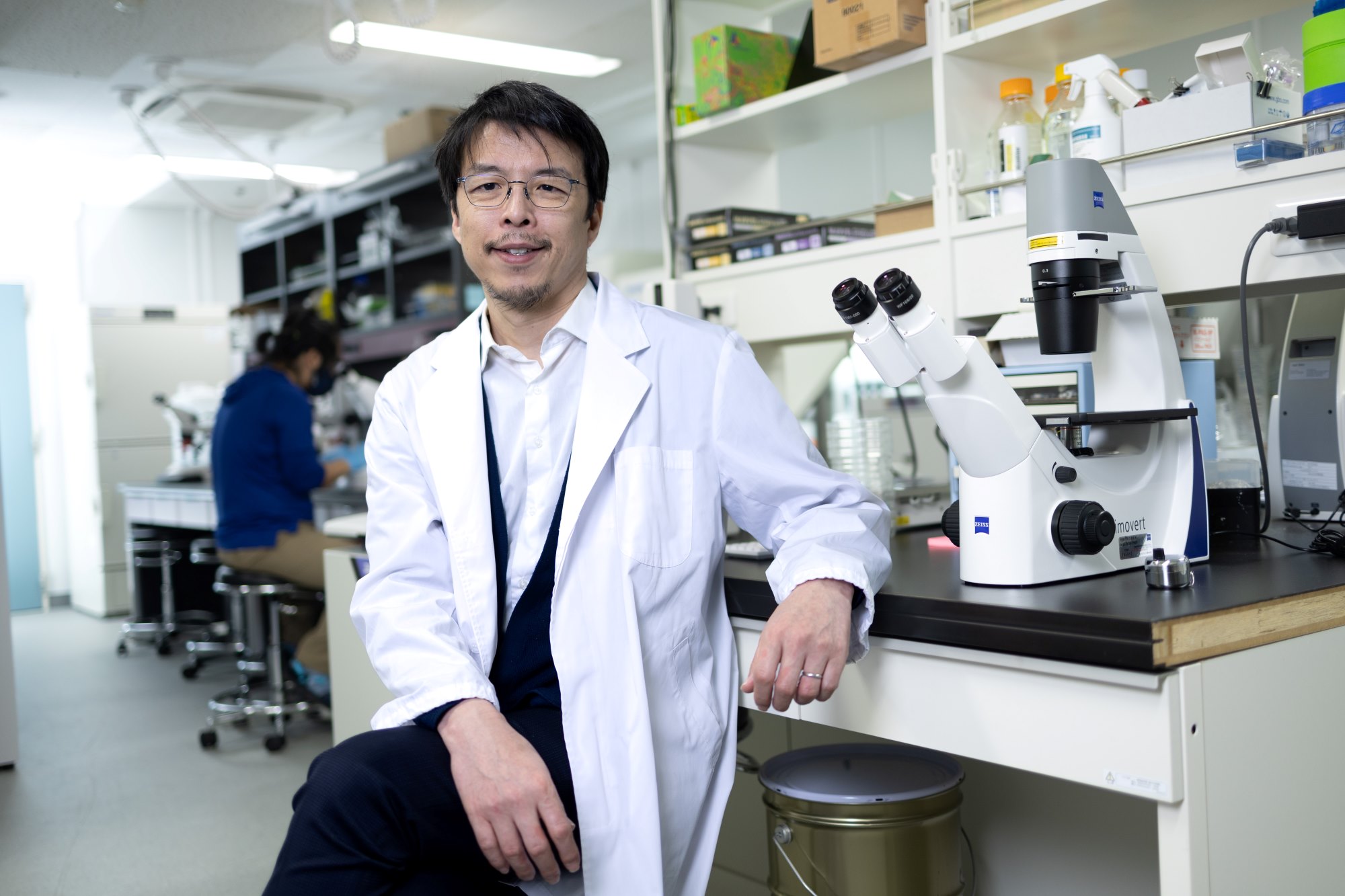
Professor Katsuhiko Hayashi, Graduate School of Medicine
"Redefining mammalian reproduction through trailblazing stem cell research"
Dr. Katsuhiko Hayashi is a globally renowned stem cell researcher who specializes in germline genetics. In 2023, he and his team published their groundbreaking achievement in Nature: the successful generation of fertile mouse pups from the cells of two male parents1. Recognized as a significant advancement in reproductive science, this achievement not only astonished the scientific community but also ignited hope for the preservation of endangered species, leading Dr. Hayashi to be named one of Nature’s 10: ten people who helped shaped science in 20232 and TIME Magazine’s 100 most influential people of 20243.
In the thought-provoking paper1, the researchers first described the conversion of embryonic stem cells (ES cells) from male mice into those of female mice. The technique involves subculturing ES cells for multiple times under conditions that induce aneuploidy, in which chromosomes are duplicated or lost altogether. After eight passages, they found that several male ES cells lost their Y chromosome, essentially changing them to female cells with an unpaired X chromosome. They then incubated those cells in reversine, a chemical used for stem cell dedifferentiation that disrupts quality control during cell division, making duplication of the X chromosome more likely. Following cell sorting, they isolated cells with duplicated X chromosomes and a normal number of somatic chromosomes.

The subsequent technique involves inducing the differentiation of the isolated ES cells into PGC-like cells (cells that resemble the primordial germ cells (PGCs), germline stem cells that give rise to gametes). The formation of oocytes was then induced by co-culturing the PGC-like cells with reconstituted fetal ovary cells in an ovary organoid. The resulting oocytes were fertilized in-vitro by wild-type sperm cells, producing fertile mice pups and hence completing the process of reproduction from two male parents. They replicated the experiment using induced pluripotent stem cells (iPS cells) from the skin of male mice and obtained the same results, hence bypassing the need to use ES cells.
Such significant progress was made possible through the accumulation of years of research performed by teams of pioneering researchers at Kyushu University and Osaka University led by Dr. Hayashi. Looking forward, he aims to use these techniques for applications beyond the laboratory, such as preserving critically endangered animals. He is working with international scientists and conservationists in trying to overcome the great challenges of applying these methods to larger animals, such as the critically-endangered northern white rhinoceros, and eventually humans. Despite the difficulties and ethical issues in working with human reproductive cells, his research may also open the possibility for same-sex couples to conceive children of their own.

Yet even after his groundbreaking research accomplishments, Dr. Hayashi remains humble and stresses the importance of hard work to answer fundamental questions in science. He believes that scientific progress is built on a foundation of dedication, grit, and steadfast commitment to seeking answers to fundamental inquiries. By staying true to these principles, Dr. Hayashi continues to inspire the next generation of researchers and pave the way for transformative discoveries in the field of reproductive biology and beyond.
References:
1. Murakami K, Hamazaki N, Hamada N, Nagamatsu G, Okamoto I, Ohta H, Nosaka Y, Ishikura Y, Kitajima TS, Semba Y, Kunisaki Y, Arai F, Akashi K, Saitou M, Kato K, Hayashi K. (2023) Generation of functional oocytes from male mice in vitro. Nature 615, 900–906.
2. https://www.nature.com/immersive/d41586-023-03919-1/index.html
3. https://time.com/6964621/katsuhiko-hayashi-2/
Text: Clement Angkawidjaja/Edit: Christopher Bubb